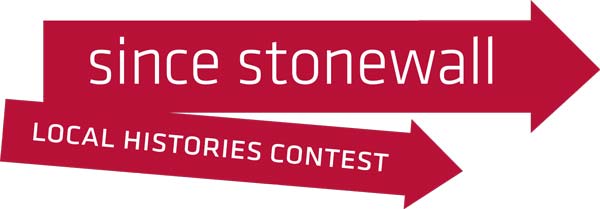Guidelines
The Since Stonewall Contest invite YOU to create an exhibit about LGBTQ history in your local community over the last 40 years and post it on OutHistory.org. Any logged-in user can create and edit web pages on OutHistory.org. To be considered elligible for this contest, all you have to do is create your exhibit. No other action is required.
Timeline:
- To be eligible for the contest, first drafts of exhibits must be posted by the 40th anniversary of the Stonewall riots on June 28,2009.
- Revised exhibits must be completed by March 31, 2010.
- OutHistory will announce the top five exhibits on June 28, 2010.
Requirements:
- Your exhibit must have a title that includes the village, town, city or county and state and a time frame. Although we prefer that exhibits span the entire 40 year period, we will accept exhibits that begin after 1969. For example “In the Life, Detriot, MI: Since Stonewall Contest, 1984-present.”
- Your exhibit must have a main page that lists all the additionalpages in your exhibit.
- Every page must cite all sources using the Chicago Manual of Style Guide which can be found here:
http://www.chicagomanualofstyle.org/tools_citationguide.html
- Every page in your exhibit must have subject categories. These categories might include: “Gay, Lesbian, Transgender, AIDS, Parenting, Aging, Activism.”
- Every page in your exhibit must have a synopsis. For example: “This page discusses how the HIV/AIDS epidemic affected gay life in Chicago, IL.”
- Every page in your exhibit must have specified time-span. For example, “August 1981 – July 1992.”
- Every exhibit must have a contact person. You can post a contact person’s name and e-mail address on your page, or send it to outhistory@gc.cuny.edu.
Suggestions:
- There are multiple ways to structure a local history exhibit. Consider which structure would work best for the story you want to tell. You could, for example, base your 40-year exhibit around a few individuals’ life stories, notable local events or specific places in your community . You could document how different groups of people have experienced the last forty years differently.
- Find a wide array of sources on which to base your exhibit: newspaper articles, interviews, letters, artwork, maps, etc. Find historical documents and objects at through LGBTQ archives or local
historical societies.
A listing of LGBTQ archives across the country can be found here: http://www.archivists.org/saagroups/lagar/guide/index.html
- Try to make exhibits as dynamic as possible – include images, video and audio clips whenever possible. See OutHistory “Help” pages for instruction about how to do so.
- Try to design your exhibit so that a broad audience of internet users can understand and learn from it.
- You may want to include a timeline of events so that the history you are telling is clear.
For more information please contact the project coordinator at outhistory@gc.cuny.edu
